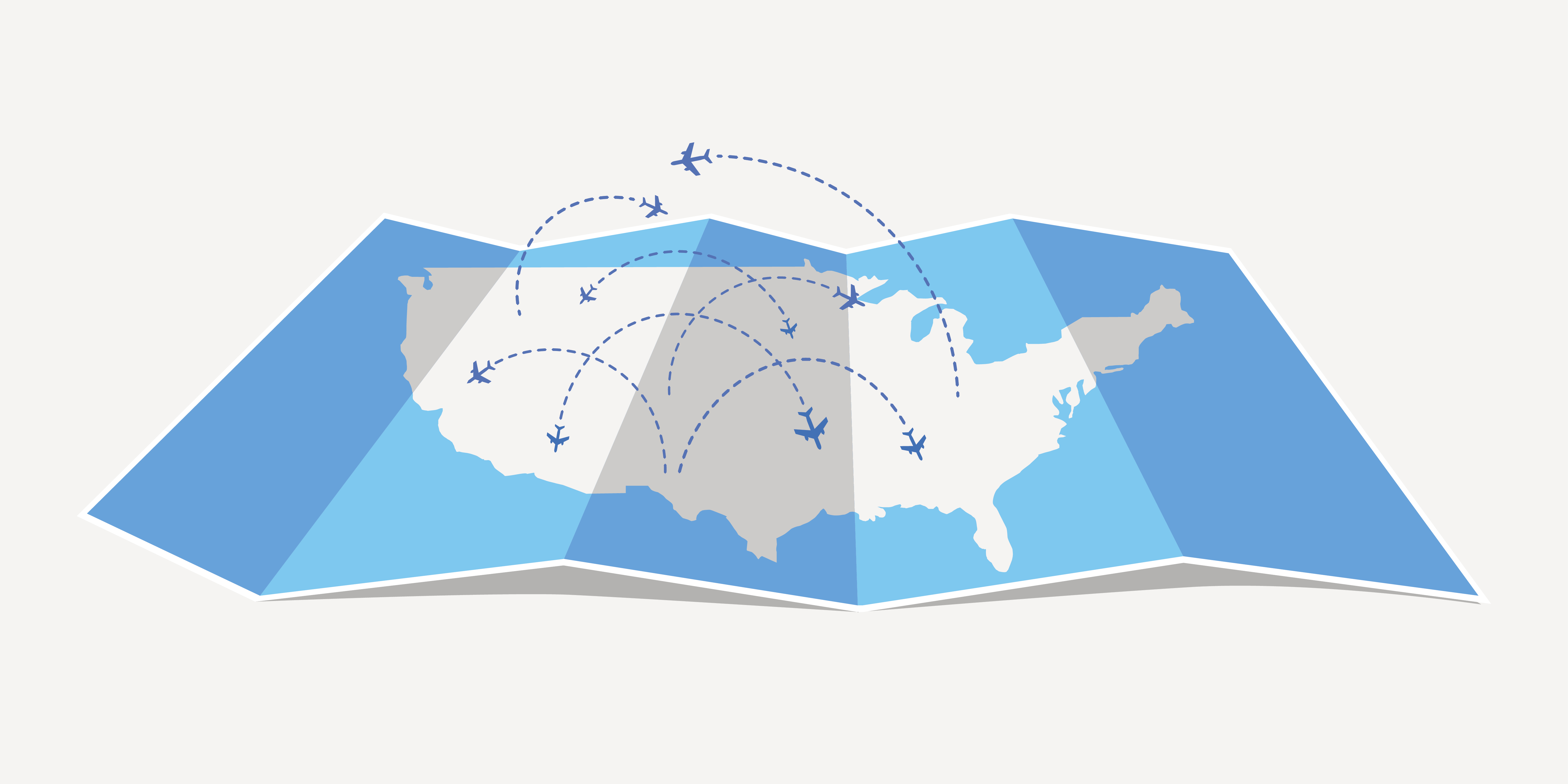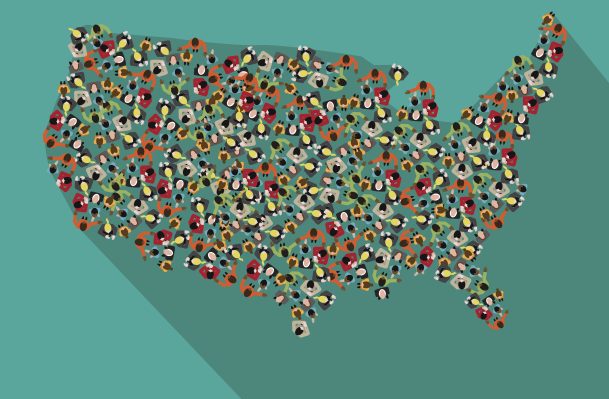There comes a time for many startup companies where they either realize they need to do a nationwide rollout, or they need to actively target buyers in the middle of the country. If you are a startup on either the East or the West Coasts, it’s worth thinking about how this market might present its own set of unique challenges, and how you plan to overcome them.
There are a lot of misconceptions about what some people call “flyover country,” and as a San Francisco native who spent two decades in New York, Washington DC, and Boston before moving to Pittsburgh, I can assure you they are almost all wrong. Without getting into specifics, the reality of “middle America” is that it’s the same as anywhere else.
Income, education, world view, and waistlines are all varied. It’s pretty accurate that San Francisco possesses a culture obsessed with fitness and entrepreneurship, but California isn’t necessarily all like that, and if you think it is, I encourage you to go to Bakersfield, the Central Valley, or Eureka sometime.
In addition, just because the stereotypes are wrong doesn’t mean there’s nothing different about doing business here. As you think about how to conduct your rollout, here are some things you should consider:
Table of Contents
Research
As with any market, research is key since it informs every other aspect of the rollout. Start by looking into who your competition is.
Since there are fewer VC-backed startups in middle America, and smaller companies tend to get less press, the research may be harder. However, there are some major universities that are actively putting money into their own Entrepreneurship programs and those spinoffs often do very well.
If you are looking for cities that have a lot of startup activity I would recommend the following: Atlanta, Columbus, Detroit, Pittsburgh, Indianapolis and Chicago. Here’s a list of some of the publications that are covering startups in the middle of the country:
- Upside.fm — This is both a regular podcast, and an online publication called The Update. They cover startup investing outside Silicon Valley.
- American Business Journals — This is a brand that operates Business Journals for cities in 43 markets. They have publications in a number of good, middle-America markets such as Austin, Atlanta, Columbus, and more.
- American Inno — This covers innovation outside Silicon Valley in places such as Colorado, Cincinnati, Minneapolis, Chicago, and Tampa Bay.
- Technical.ly — This focuses on the tech communities in Brooklyn, Delaware, Baltimore, Washington, D.C. and Philadelphia
- Silicon Prairie News — This concentrates on tech innovation in Nebraska, Kansas, Iowa, and Missouri
- Hypepotamus — This covers startups in the Southeast (Atlanta, Charlotte, etc.)
Audience

Image via Getty Images / drogatnev
Once you have an idea of who you are competing against, you should make sure you know as much as possible about your target audience. If you already have Midwestern customers without actively selling in-market, I would consider segmenting them out and offering something in exchange for their feedback on the product.
If they say they are buyers for the same reason as everyone on the coasts, great. If not, consider doing some unique research to make sure you are getting it right.
It’s possible that people who buy your product in Ohio do so for very different reasons that customers in Massachusetts. If you already have a national agency supporting your rollout, I would talk to them about market research. A few focus groups can go a long way when you want to understand buyer intention.
Launch calendar
While there are people of all political persuasions in middle America, one thing that is definite is that holidays are basically the same as the federal government calendar. In New York, business generally runs on the stock market calendar.
In San Francisco, Columbus Day is sometimes referred to as Indigenous People’s Day. If you can pinpoint your efforts to a certain city, you can go by that city’s public school calendar. If not, just stick with the federal government for the name and date of any holiday to consider.
Advertising
No matter what method you use to support the launch (social, digital, outdoor, TV, etc) you obviously want the ad to resonate. If you did a good job on the research and you market test the ads, hopefully you won’t go too wrong.
However, I would strongly caution against using a flashy East Coast ad agency that does not have offices in the middle of the country. Even a junior member of the team based in your target market can sound the alarm if something might be considered offensive or just off.
Youth

Image via Getty Images / A-Digit
If you are aiming for an 18-24 demographic to generate early buzz, it’s worth it to consider outreach at state universities. The Midwest has some truly gigantic schools where you can target tens of thousands of people.
Getting these students interested in your product just before spring or summer break (when they often return home) can help generate word of mouth that could save a lot of money on advertising. Some good options for schools might include a few closest to the cities with the most startup activity. A shortlist of these might include:
- The Ohio State University (in Columbus)
- University of Texas (in Austin)
- Penn State University (in State College, PA near Pittsburgh)
- Michigan State University (in East Lansing, near Detroit)
- Georgia State University (in Atlanta)
- Indiana University (in Bloomington, IN near Indianapolis)
Public relations
All PR practitioners know that media targeting is key, however, there are a few best practices for dealing with Midwest editors and journalists:
- Products that are highly focused on people who live in cities might need more explaining. There are downtown revitalizations happening all over the Rust Belt, and while younger tech reporters (without kids) might live in the cities, most editors won’t. If your product isn’t likely to be used outside dense urban areas, then pitch it to journalists as something people would use during the workday.
- Never use jargon, but especially stay away from the jargon popular in the tech world. If the only way to describe your product is that you are the “Uber for X”, go back and come up with a message that a six-year-old would understand.
- There are loads of places in the middle of the country that only take cash. Don’t suggest that crypto is the wave of anyone’s future. That won’t resonate.
Pitfalls

Image via retrorocket
There are, of course, a huge number of potential hazards you could run into when conducting a rollout, or just generally selling in an area you are unfamiliar with. The number one pitfall is making assumptions.
There are all sorts of companies who have stubborn founders or marketing heads, who are convinced of their assumptions and don’t think it’s necessary to test them. Even if your founder grew up in the midwest, or worse yet has a best friend or girlfriend who did, getting some feedback in the market is never a waste of time.
I find people make the worst assumptions about middle America when they read one single article about life there and then think they are experts. I have lived in Pittsburgh for almost four years and I am still a tourist.
The whole first year here I asked my husband to continually “translate” what people meant. I truly don’t think you are going to understand much from one article (even this one). Here are a couple more pitfalls to avoid:
- Roll out before the product is really ready — This is a pretty universal pitfall, though it’s amazing how often it still happens. If you ship a product that doesn’t work well yet, it will be much harder to win those customers back if this is their first experience with it, or they live in a market where they would have no other exposure to your company (i.e. no online ads, billboards, or positive press).
- Lack of consumer education — One issue that companies sometimes underestimate is how much consumer education is necessary before people really understand the value proposition. This can be really tricky if your rollout is B2B as you likely can’t afford sales staff everywhere you want to sell. In this case, it’s best to consider your budget for direct mail, events, and PR. It’s hard to lay the groundwork for a product or service in a huge market, and even harder when you skimp on the consumer education.
- Midwestern passive-aggressiveness — One final thing to mention is that — in my experience — “Midwestern passive-aggressiveness” is a real thing. This is not to say that this does not exist anywhere else. The older I get the more I find it in San Francisco, for example. However, one of the most important reasons to get in-market feedback is that as an outsider it can be really hard to understand what someone is saying to you, when they are trying not to say anything that could be perceived as “rude.” This does not mean there are not rude people in the Midwest, and it does not mean that everyone is nice all the time. What it does mean is that you have to be extra careful when getting feedback on your product, or from any vendors who might represent you in this part of the U.S. There are many times where people will go out of their way to say nice things about something, even when they don’t feel positive about it. If you’re careful and take this issue into account, it’s easy enough to make sure it doesn’t become a pitfall.

Image via Getty Images / nazarkru
Overall I would say that any successful startup is going to want to sell in the largest market possible, and while you first customers are going to be close to “home,” getting to scale (and that next valuation) usually means branching out.
If you are like most founders, you have probably spent most of your adult life on either the East or West Coasts, and are very entrenched in urban life. If you have successfully raised VC money, your vocabulary is probably more similar to theirs than anyone else’s (ie – just the B’s: benchmark, burn rate, Burning Man).
And while all this has been necessary to make you successful thus far, as the saying goes “what got you here won’t get you there.” If your plan is to get people to buy your product or service in middle America, here’s my three-step plan:
- Get on a plane. Go spend at least 2-3 days in just one of the places that you consider to be key to your rollout. If this is Minneapolis for example, don’t spend all your time in the city. Rent a car and go to the major suburbs.
- While there, only meet with potential customers (not VC’s or bankers or lawyers). If you want to meet with vendors, make sure in your meeting they include at least one member of the team who fits your exact demographic. Then, at that meeting, sit somewhere where you can see their facial expression (it will help in determining what they really think).
- Spend time doing regular things. Attending a sporting event is a good idea. Visiting a local food chain is another good option. Even taking a trip to a suburban mall can be enlightening.
Write down your observations, and use them to test against the assumptions in your rollout plan. Many companies have conducted national expansion campaigns successfully, so if you are prepared there is nothing to fear. Good luck.
